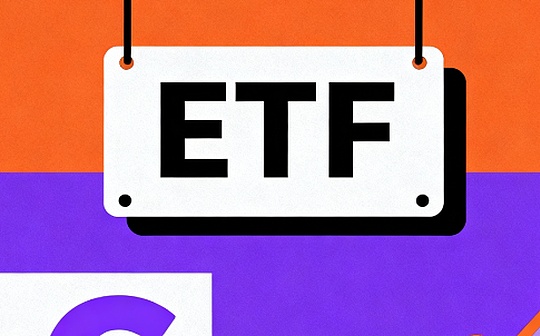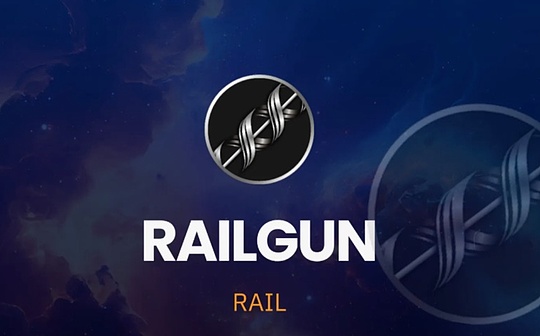
Source: Galaxy; Compiled by: Bitchain Vision
On October 28, three new cryptocurrency spot exchange-traded funds (ETFs) began trading on the U.S. market, but none of them are related to Bitcoin or Ethereum.
Canary has launched two ETFs, one tracking the Hedera blockchain’s HBAR token (HBR) and the other tracking one of the oldest cryptocurrency networks, Litecoin (LTCC).However, the Solana Spot Staking ETF (BSOL) launched by Bitwise has become the focus.
At the beginning of this month, Grayscale added a staking function to its two Ethereum spot exchange-traded products (ETPs); on October 29, Grayscale Solana Trust (GSOL) also launched a staking function.With the launch of these products, there are now 115 cryptocurrency ETFs in the United States, with more than 25 of them offering crypto spot trading on a single asset.
In anticipation of the government shutdown, the U.S. SEC issued guidance in advance allowing issuers to remove “delayed amendments” from their registration statements.The change makes the filing automatically effective after a 20-day waiting period, allowing these ETFs to begin trading during the government shutdown.
Bitwise’s BSOL attracted $69.5 million in net inflows on its first trading day, while Canary’s two altcoin ETFs saw no gains.On the second day, BSOL attracted another $46.5 million in inflows, compared to only $2.2 million and $500,000 for HBR and LTCC, respectively.As of Thursday’s close, BSOL had a cumulative net inflow of $37 million, HBR had an unexpected net inflow of $30 million, while LTCC remained unchanged.In the first three days, BSOL had a cumulative capital inflow of approximately US$150 million, making it the best-performing ETF rookie in 2025.
Galaxy’s perspective:
The launch of the latest wave of cryptocurrency ETFs sheds light on larger issues facing the digital asset industry around timing, regulation and competition.The ETFs are the first spot cryptocurrency ETPs to be listed since the U.S. SEC approved Common Listing Standards in September, and come amid the government shutdown.The launch of these ETFs directly reflects the advantages of the new listing framework, which allows national exchanges to list eligible spot cryptocurrency and commodity ETPs according to standardized standards, thereby simplifying the listing process of eligible assets.Issuers also took advantage of the SEC’s procedural guidance, which allows a registration statement to automatically become effective after a 20-day waiting period, provided that the delaying effective amendment is removed.
Bloomberg analyst James Seyffart pointed out that it is unclear whether this procedural shortcut will officially apply to the filing of cryptocurrency ETFs, but what is striking is that issuers moved quickly to try to seize the opportunity.In a market where fees are increasingly compressed, timing is of the essence, and some issuers are taking advantage of this automatic mechanism to bring products to market in unconventional ways, highlighting the intensity of competition in this area.
The highly anticipated launch of the first staking-enabled Solana spot ETF is a milestone for the U.S. market.Bitwise’s BSOL attracted $116 million in inflows in its first two days, accounting for about 0.1% of Solana’s $106 billion market capitalization.By comparison, nine Ethereum spot ETFs launched on July 23, 2024, saw $26.4 million in outflows in their first two days online, primarily due to Grayscale redemptions.Inflows remained muted over the next few months before rising significantly until around the November election.By comparison, ten Bitcoin spot ETFs attracted $858 million in inflows in their first two days, also accounting for about 0.1% of Bitcoin’s $837 billion market capitalization at the time.What makes BSOL’s debut particularly noteworthy is its unusually strong early inflows, considering there are far fewer products to choose from.Currently, there are only two Solana spot ETFs, compared to nine for Ethereum and 10 for Bitcoin.As Bloomberg’s Eric Balchunas noted, BSOL also had the highest first-day trading volume of any ETF this year, with about $56 million in first-day trading volume.
In contrast,Two altcoin ETFs – HBR and LTCC – saw minimal trading activity, with zero first-day inflows and second-day inflows of $2.2 million and $500,000 respectively..This highlights that demand tends to weaken as risk levels increase.Traditional investors are still not very familiar with altcoins, and educating them about these protocols will take time.Altcoins have a bleaker long-term outlook compared to Bitcoin, Ethereum or Solana, which explains their low market interest, because these networks play a narrower role in the broader crypto ecosystem.
The price fluctuations of these three cryptocurrencies after the ETF listing were relatively limited.LTC gained 3% on the day the ETF began trading, HBAR gained 2.6%, and Solana’s SOL gained just 1.6%, suggesting that much of the rally may have occurred before the ETF launch.
In the coming months, more ETFs are expected to be listed in compliance with the new common listing standards.In addition to Solana, Hedera and Litecoin,Potential candidate assets may include Dogecoin (DOGE), Bitcoin Cash (BCH), LINK, XLM, AVAX, SHIB, and DOT.
Finally, there is one noteworthy detail about BSOL.The fund aims to stake up to 100% of its assets and currently has around 90% staked.In order to ensure liquidity, most issuers will limit the pledge ratio to 50%-80%, because it takes about two days to un-pledge SOL.In order to reduce the redemption risk, Bitwise cooperates with a third party to exchange the SOL to be pledged into pledged SOL.This arrangement can not only maintain the liquidity of the fund, but also obtain income.In a market where every basis counts, this innovation may prompt other issuers to follow suit.







